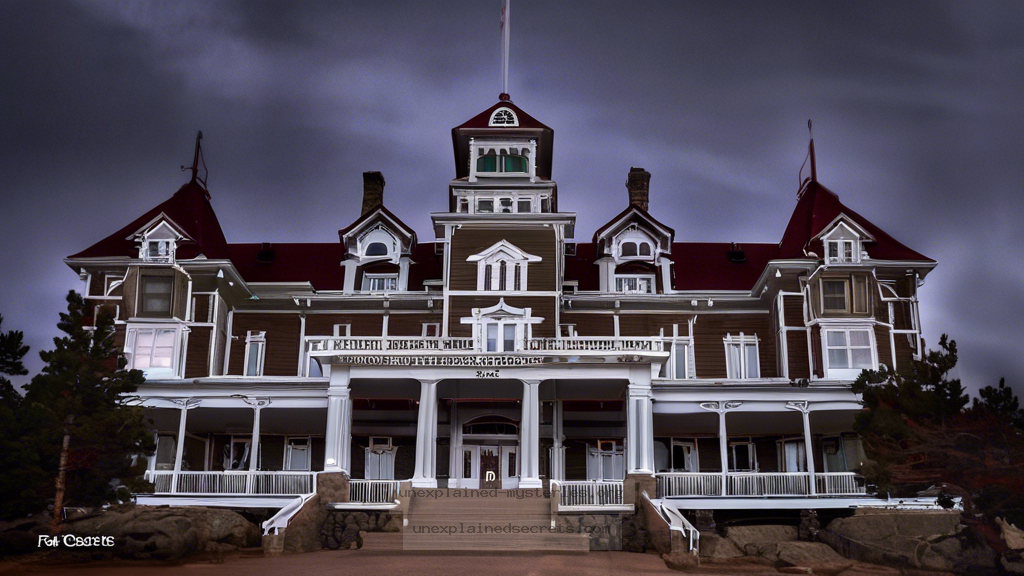What Secrets Lurk in the Shadows of the Stanley Hotel’s Haunted Halls?
What Secrets Lurk in the Shadows of the Stanley Hotel’s Haunted Halls?
The Stanley Hotel in Estes Park, Colorado, is a captivating destination known for its stunning views and rich history, but it is equally renowned for its ghostly inhabitants and unexplained phenomena. This iconic landmark not only inspired Stephen King’s “The Shining,” but it also serves as a focal point for paranormal enthusiasts. Understanding the mysteries surrounding the Stanley Hotel is essential for both fans of the unexplained and those interested in the history of haunted locations. What makes this hotel a hotspot for supernatural encounters, and what can we learn from its eerie tales?
Historical Context: The Birth of the Stanley Hotel
The Stanley Hotel was established in 1909 by Freelan Oscar Stanley, a Boston-based inventor who sought a rustic getaway for tuberculosis treatments. The hotel quickly became a luxurious retreat, attracting wealthy guests and notable figures. The architectural style is a mix of Colonial Revival and Victorian, providing an atmosphere that is both elegant and inviting. However, this historic charm also sets the stage for numerous ghost stories and paranormal activity that have emerged over the decades.
One of the most prominent spirits said to haunt the hotel is that of F.O. Stanley himself. Visitors often report hearing piano music emanating from the empty ballroom, while some staff members claim to have encountered the spirit of Mrs. Stanley, who was known for her love of hospitality and her dedication to the property’s upkeep.
The Haunting of Room 217: A Gateway to the Supernatural
Room 217 is perhaps the most famous haunted room in the Stanley Hotel, primarily due to its association with Stephen King’s novel. Guests who have stayed in this room often report a variety of strange occurrences. These include unexplained movements of furniture, the sensation of a presence in the room, and even sightings of a woman in a long, white dress.
The legend behind Room 217 involves a housekeeper named Elizabeth Wilson, who reportedly suffered a tragic accident while preparing the room. Many believe her spirit remains, tending to the guests as she once did in life. The tales of her ghostly activities have drawn countless visitors eager to experience the supernatural first-hand.
Core Concepts of Haunted Locations: What Makes a Place Haunted?
When examining haunted locations like the Stanley Hotel, various theories attempt to explain the phenomena. These include:
- Residual Energy: Some theories suggest that traumatic events or strong emotions can leave behind a residual energy that occasionally replays itself, akin to a video loop.
- Intelligent Spirits: Others believe that spirits remain due to unfinished business or a strong attachment to the location, allowing them to interact with the living.
- Environmental Factors: Some researchers argue that environmental elements like electromagnetic fields or infrasound can create feelings of unease, potentially leading to paranormal experiences.
Key Insight: The Stanley Hotel exhibits characteristics of both residual energy and intelligent spirits, making it a rich site for investigation.
Documented Experiences: Ghost Tours and Investigations
The Stanley Hotel offers various ghost tours that delve into its haunted history, attracting both skeptics and believers. During these tours, guides share chilling accounts from previous guests and staff. Many of these stories are corroborated by documented experiences and investigations conducted by paranormal teams.
In 2006, a group of paranormal investigators from the television show “Ghost Hunters” conducted an investigation of the hotel. They captured several unexplained phenomena, including disembodied voices and strange temperature fluctuations. These documented findings have cemented the hotel’s status as one of the most haunted locations in the United States.
Comparative Analysis: The Stanley Hotel vs. Other Haunted Locations
| Location | Year Established | Type of Haunting | Famous Spirits |
|---|---|---|---|
| The Stanley Hotel | 1909 | Intelligent and Residual | F.O. Stanley, Elizabeth Wilson |
| The Queen Mary | 1936 | Intelligent | Lady in White, John Pedder |
| Eastern State Penitentiary | 1829 | Residual | Inmates, guards |
This comparison illustrates that while many haunted locations share common themes, each has its unique characteristics that contribute to its haunted reputation. The Stanley Hotel is particularly notable for its combination of rich history and ongoing supernatural activity.
Common Misconceptions About Haunted Locations
Despite the growing interest in hauntings, several misconceptions persist about locations like the Stanley Hotel. These include:
- All hauntings are malevolent: Many people assume that all spirits are harmful or vengeful. However, many reported encounters are benign or even protective.
- Ghosts can be exorcised: The idea that a ghost can simply be banished is often oversimplified. Many believe that spirits are tied to specific locations and cannot be easily removed.
- Paranormal experiences can be easily replicated: While some may try to recreate ghostly encounters, the unique history and energy of a location like the Stanley Hotel cannot be duplicated elsewhere.
Clarification: Not all spirits are negative; many are simply seeking connection or closure.
Best Practices for Investigating Haunted Locations
For those interested in exploring haunted locations such as the Stanley Hotel, there are several best practices to follow:
- Research the history: Understanding the historical context of a location can enhance your investigation and provide insights into potential hauntings.
- Use reliable equipment: Invest in quality equipment such as EMF meters, digital voice recorders, and thermal cameras to document your findings.
- Maintain a respectful attitude: Treat the location and any potential spirits with respect. This fosters a more positive environment for any interactions.
- Document everything: Keep detailed notes of your experiences, including times, locations, and any anomalies you encounter.
By adhering to these guidelines, investigators can conduct more thorough and respectful explorations of haunted locations.
Future Developments: Ongoing Research and Exploration
As interest in the paranormal continues to grow, new technologies and methodologies are emerging to study haunted locations more effectively. Researchers are exploring advanced imaging technology, sound analysis, and even AI-assisted investigations to better understand unexplained phenomena. The Stanley Hotel remains a focal point for ongoing research, with many teams returning to investigate its mysteries further.
Moreover, the rise of social media has allowed ghost hunters to share their experiences in real-time, fostering a community of enthusiasts eager to explore these haunted spaces. This collaborative approach may lead to more documented evidence and a deeper understanding of the supernatural.
Conclusion: Unraveling the Enigma of the Stanley Hotel
The Stanley Hotel stands as a testament to the intricate relationship between history and the paranormal. Its haunted reputation is not merely a collection of ghost stories; it reflects a deeper connection to the past and the energies that linger in its halls. As we continue to explore the mysteries of haunted locations, each investigation brings us closer to understanding the nature of these phenomena. From the chilling tales of Room 217 to the vibrant experiences shared by guests and researchers alike, the Stanley Hotel offers a unique glimpse into the world of the unknown. Whether you are a skeptic or a believer, the allure of the supernatural at the Stanley Hotel remains undeniable, beckoning all to uncover the secrets that lie within its shadows. 💡
Other Articles
Recent Posts
- What Happened to Flight MH370? The Conspiracy Theories That Still Haunt Us
- What Secrets Lurk Within the Walls of the Infamous Trans-Allegheny Lunatic Asylum?
- What Evidence Supports the Existence of Bigfoot in the Pacific Northwest?
- What Happened to the Indus Valley Civilization? Unraveling the Mysteries of Ancient Urban Life
- Can Telepathy Be Scientifically Proven Through Laboratory Evidence?







